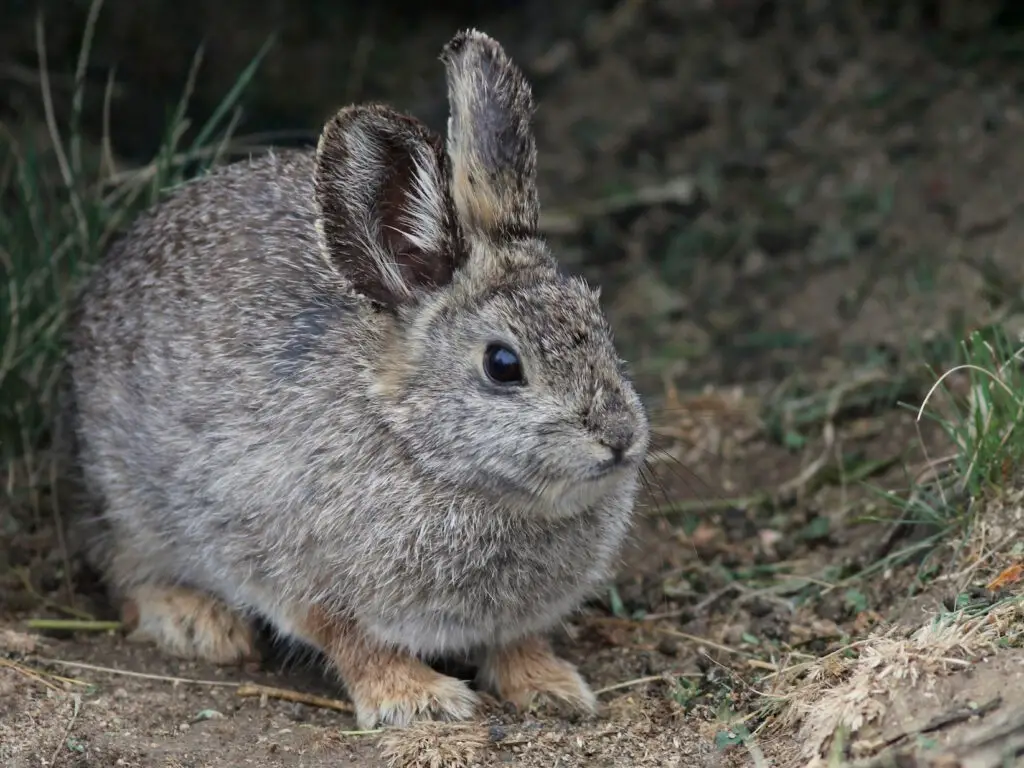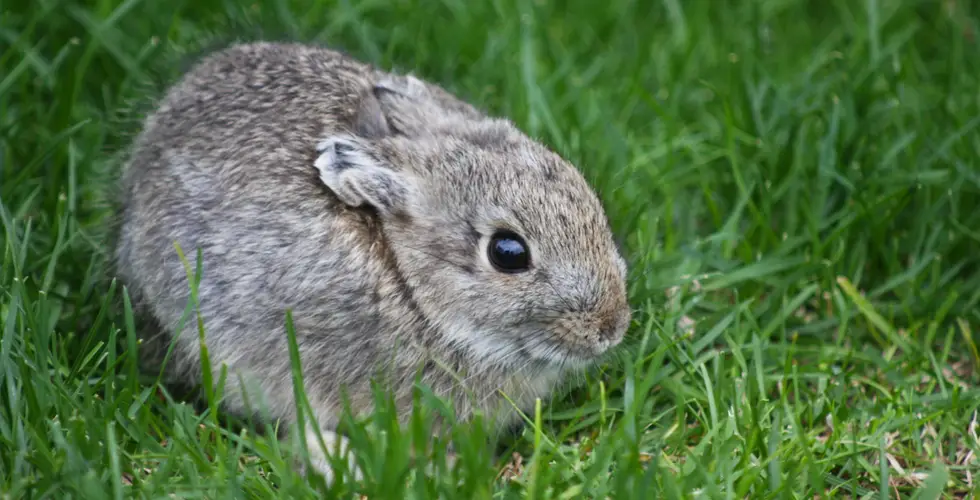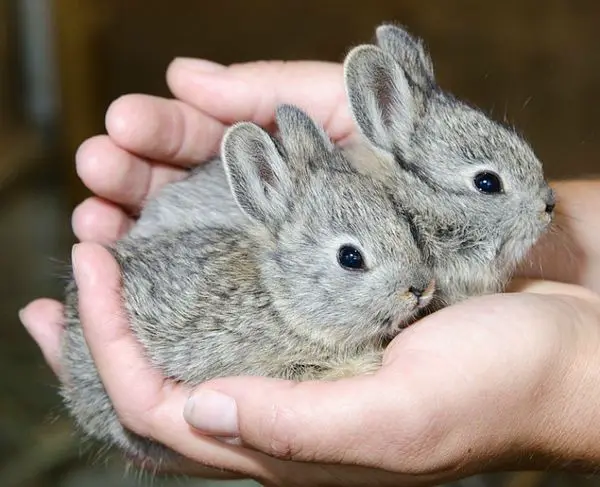Last Updated on June 12, 2023 by Emma Reynolds
Contents
Plenty of information has been written on this site for rabbits but until now they are all mostly focused on domestic rabbits. In this post, I’d like to take an important detour and put one extremely special breed into the spotlight: The Columbian Basin Pygmy Rabbits.
However, I will also be touching on other pygmy rabbits that are endemic to the United States.
Unbeknownst to the majority of people rabbits are included in the International Union for the Conservation of Nature (IUCN) as one of the most endangered species of animals on the planet.
There are 23 out of 60 species of rabbits today that are on the brink of extinction. As mentioned above, Pygmy Rabbits meet the criteria and these include the Columbian Basin Pygmy Rabbits.
The Columbian Basin Pygmy Rabbits has the scientific name Brachylagus Idahoenensis and is the smallest breed of rabbit in the United States. They are also considered critically endangered and thus, conservation efforts are continuing to keep their population alive.
Also, because they are endangered, the Pygmy rabbits have both State and Federal Endangered status.

The Columbian Basin Pygmy Rabbits are usually found in Washington Area and are genetically different than other pygmy rabbits that are scattered in the United States.
They very nearly came close to extinction in 2001, when only 16 species of their population was left. It is because of the different state initiatives for conservation that their population has increased but they are not at the level to be considered out of danger. Pygmy rabbits are still continuously battling the dangers that are continuously decimating their population.
Some of these factors include:
- Loss of Habitat
- Climate Change
- Natural Predators
- Few numbers of Litters
The Columbian Pygmy Rabbits: The Basics
It is believed that Pygmy Rabbits have lived for over 115,000 years. They are the smallest rabbits on earth and therefore are smaller and weigh less than domestic dwarf rabbit breeds. They can only grow up to 1ft long but even that is rare.
Most pygmy rabbits are actually shorter than your standard school ruler They can also only weigh up to less than 1 lb. If you are thinking that these are fragile breeds for sure then you are right.
Columbian Pygmy Rabbits and Pygmy rabbits, in general, are very cute. They share this trait with their domestic rabbit cousins. They are characterized by their soft and fluff fur. However, they only come in one coat color.
All Pygmy rabbits have grayish, brown fur. This protects them during the cold weather and helps them to hide from predators by helping them blend easily into their environment.
Female pygmy rabbits tend to be larger than male pygmy rabbits. They have short ears and tails that are so tiny it’s almost hard to see.

Columbian Pygmy Rabbits are also burrowers. This means that they dig their own burrows. This is the only native rabbit in the United States that does this behavior. When rabbit burrows, they will not live or use other burrows that are made by other animals. This is also the reason why Pygmy rabbits have sharp claws.
Burrows also help Pygmy rabbits to hide from predators. Natural predators of Pygmy rabbits are many. They include coyotes, weasels, badgers, hawks, owls, and snakes.
Pygmy rabbits then have very short lifespans of 2 to 3 years because they are always exposed to the dangers of the wild.
Female pygmy rabbits will create nesting burrows different from residential burrows. These burrows are where they give birth. The breeding season for Pygmy rabbits is usually from Feb to July.
They are known to produce two to four liters per year and each liter contains a maximum of six baby rabbits.
The Columbian Pygmy Rabbits Habitat and Diet
The Columbian Pygmy rabbits can be found in the Washington State Area. However, other pygmy rabbits can be found in the sagebrush dense basins of Oregon, California, Nevada, Utah, Idaho, Wyoming, and Montana.
The population of the Columbian Pygmy Rabbits in the Washington area has been isolated from other pygmy rabbits for thousand of years.
They are highly dependent on sagebrush for their living. These serve both as their habitat and their diet. Sagebrush makes up for 90% of the pygmy’s diet during the winter season.
It’s then obvious why deforestation and climate change are very detrimental to this rabbit. Loss of sagebrush will render the pygmy’s homeless and starving,
Other Facts about the Columbian Pygmy Rabbits

Because of the endangered status of the Columbian Pygmy rabbits, they are not allowed to be kept as pets. Anyone who claims to be selling Columbian Pygmy rabbits is lying or they are doing it illegally.
If you’d like to own small rabbit breeds, you can always opt to adopt or buy dwarf domestic rabbit breeds. We have a list of breeders that are accredited by ARBA to help you find reputable breeders.
Besides, Pygmy rabbits will not make good pets because they’re wild animals and are not domesticated. They will be too flighty and too nervous because they are used to constantly being hunted by animals.
Conservation Efforts for the Pygmy Rabbits
One of the most important conservation efforts is done by Conservation Northwest Organization and this is called the Sageland Heritage Program.
The Sagelands Heritage Program aims to protect and restore all shrublands from British Columbia’s Okanagan Valley up to Washington’s Horse Heaven Hills.
This also aims to connect wildlife and the community by partnering with different local organizations to help educate the local population about the importance of preserving shrub-dependent wildlife.

Here are some of the latest news on the pygmy rabbits that can also be found on the Conservation Northwest website:
- February 2021: Roller coaster to recovery: Local pygmy rabbit effort shows alarming numbers, The Columbia Basin Herald
- February 2021: Pygmy rabbit program recovers after a wildfire, The Wenatchee World
- September 2020: Endangered wildlife, habitat burned in Washington wildfires; years of effort to boost populations wiped out, The Seattle Times
- September 2020: Fire wipes out half of Columbia Basin pygmy rabbit population, The Wenatchee World
- May 2019: After nearly going extinct, Washington’s pygmy rabbits need room to grow, High Country News
- June 2018: Conserving the cutest sagelands critter
- May 2018: State reviewing protections for sharp-tailed grouse, pygmy rabbits
- March 2018: On the edge of the Sagebrush Sea
- July 2017: Quick-acting scientists save dozens of rare pygmy rabbits from Washington wildfire by The Seattle Times
Conclusion
Although the Columbian Pygmy Rabbit can’t be raised as pets it is still important to know about their endangered status. Awareness leads to action and we are all a community of species that has their special purpose on Earth.
The preservation of the Columbian Pygmy Rabbits should be a community effort. Helping save these bunnies will also save other endangered species and Mother Earth will be better for it.
Emma is a young, enthusiastic veterinary assistant based in Portland, Oregon. She has a natural affinity for all things fluffy, with rabbits being her absolute favorite. She got her first rabbit, a Holland Lop named Pippin, at the age of 7 and has been head over heels for them ever since. Emma holds an Associate Degree in Veterinary Science from the Portland Community College and has been working in a small animal clinic for the past 2 years.
